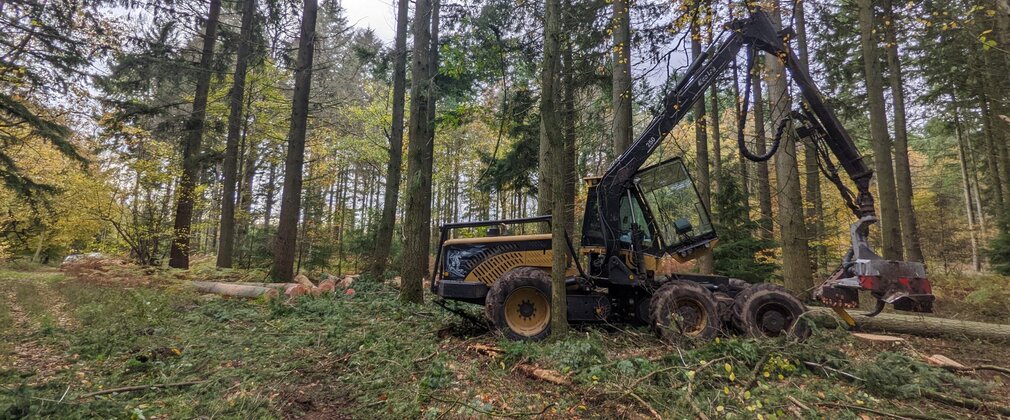Forestry operations at Savernake Forest
Updated January 2025: Works paused until Summer 2025
Ongoing wet ground conditions continue to affect timber harvesting as we pause to protect valuable soils. The work we resumed last autumn – previously delayed from winter 2023 – will hopefully restart in the summer.
Updated October 2024: Works temporarily paused
Wet ground conditions have paused timber harvesting in Savernake Forest until further notice.
It’s important we protect the irreplaceable soils to avoid any unnecessary damage. Works will only resume once we are content that the ground has improved. We will share updates as soon as we can.
Savernake Forest is a working woodland producing sustainable timber. We are working here from August until autumn 2024. This page provides more information about the work we're doing.
What is happening?
During summer and autumn 2024, we are thinning the trees in some central areas of Savernake Forest. This means removing selected trees for timber products. This gives the remaining trees more space and light to grow to their full potential. Thinning also lets more light onto the forest floor, which improves the habitat for ground flora and the wildlife it supports.
Some of our work areas are classified as Plantation on Ancient Woodland Site (PAWS) which means that we are gradually managing them back to the way it would have been several hundred years ago. Where we are thinning the trees, we will prioritise removing non-native conifers to benefit the broadleaf trees and, where possible, open up more space around some of Savernake’s special veteran trees to support their health.
We will also be identifying veteran trees of the future in an area of 1950s oak plantation. We will be removing the straighter oaks to give space to ones with potential to develop veteran form and characteristics, such as broad, open crowns.
Protecting Savernake's soils
Throughout this work, we will be taking steps to protect the forest’s valuable and irreplaceable soils. We are working with our contractor to preventing machine access to green rides, keep heavy machinery out of the root protection zones of veteran trees, lay brash mats to protect the ground where machinery must travel, only part-load the forwarder which moves timber around the work site, and fell trees by hand where necessary.
The timber from Savernake Forest is certified by the Forest Stewardship Council® (FSC®) and the Programme for the Endorsement of Forest Certification (PEFC) as being sustainably produced.
Can I still visit Savernake Forest?
Safety is our highest priority. Savernake Forest is open to visitors throughout the forestry work. We will work hard to keep disruption to a minimum but there will be times when we will need to close access around the forest so we can work safely nearby. It is essential for the safety of our visitors, staff, contractors, and volunteers that everyone follows all signs, diversions, and closures at all times, whether or not you can see or hear us working. Forestry work is very hazardous. A falling tree can weigh several tonnes and hit the ground at nearly 60mph. If a harvesting machine chainsaw snaps, it can fly through the forest like a bullet.
What about the wildlife?
Harvesting trees is an important part of sustainable forest management and well managed forests support more wildlife. Before we start any forestry work, we carry out thorough ecological surveys to check for species such as birds, mammals, rodents, invertebrates, flora, and fungi. This enables us to identify ecological constraints such as the presence of European Protected Species and Schedule 1 protected birds, which affect the time of year when certain operations can be carried out.
We consider our findings against complex factors including tree health, how the ground slopes, soil condition, and likely rainfall when planning forestry work. While working, we continue to check for wildlife and adapt, pause, or suspend work if necessary.
The soils in Savernake Forest store more carbon than all the forest’s trees combined. Without the soils, the forest and its rich biodiversity could not thrive. We work closely with our contractors to plan the most appropriate way of working that protects this irreplaceable resource. This includes preventing machine access on green rides, keeping heavy machinery out of the root protection zones of veteran trees, laying brash mats to protect the ground where machinery must travel, only part-loading the forwarder which moves timber around the work site, and felling trees by hand where necessary.
Where can I find out more?
You can read our proposed land management plan for Savernake Forest online. If you have any questions about our work in the Forest, please email us.

